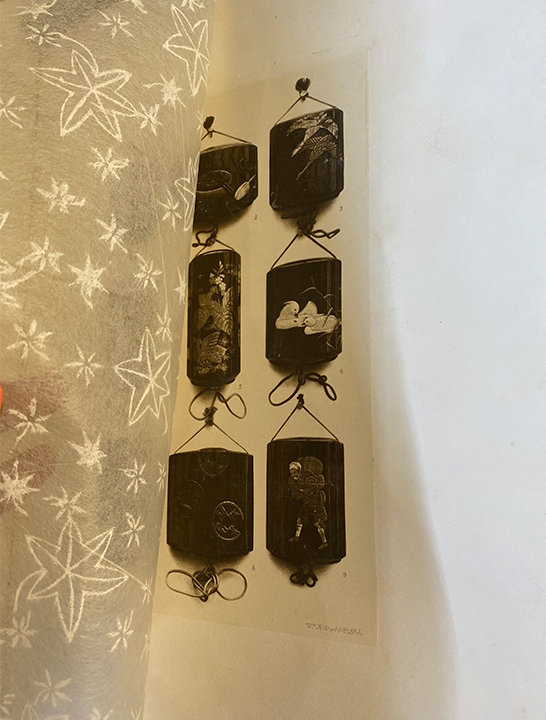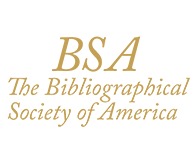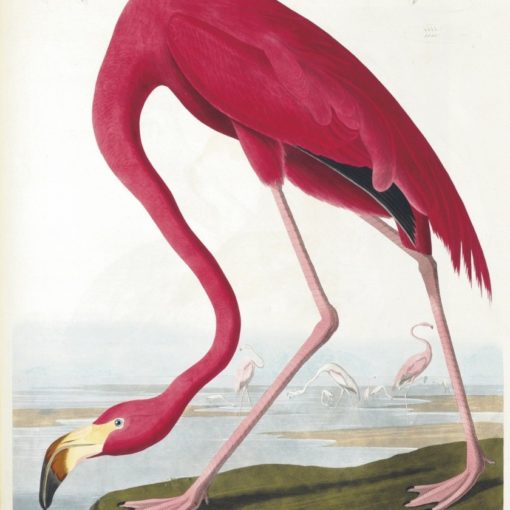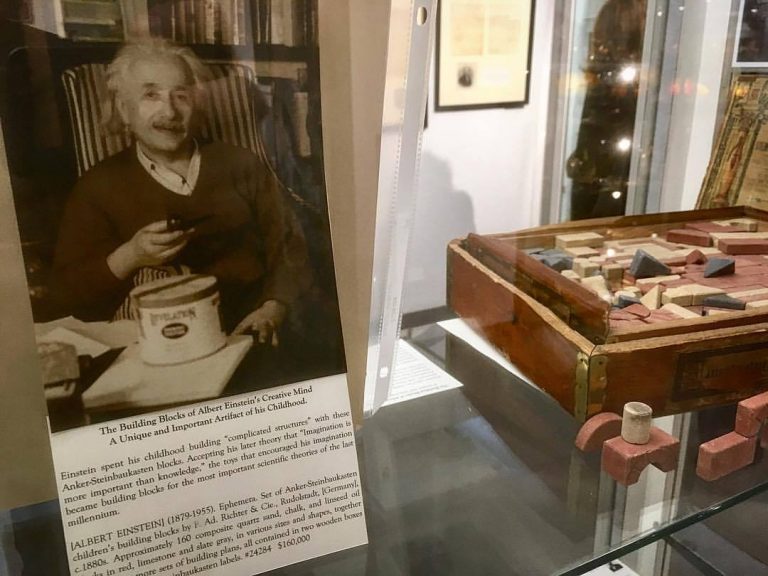While trying to choose from a myriad of different collections at New York’s Antiquarian Book Fair this past March, I was drawn to a very beautiful book on Japanese Inro. The book, titled A Paper on Inro: Read Before the Japan Society, was written by Michael Tomkinson in 1895 and is about the history of the Inro boxes. The book is kind of large measuring at 25 x 32 cm and is only 13 pages long. In fact, there are 20 pages in the book all together, but only 13 are numbered and have text on them. Charlotte Du Rietz was the collector showcasing the book and because of her, I became interested in writing about it. Du Rietz, who is selling this book for $2,176, encouraged me to take the book off of the shelf and asked me if I knew what Inro was. She mentioned that Inro were little Japanese bottles that people carried on their hip like a keychain. Upon further research I learned that Inro, which means “seal cage” in Japanese, was mostly used to carry around medicine from 1596-1615, and by the eighteenth century it became a decorative piece to wear (“Netsuke & Inro”, 2013). In the wake of the COVID-19 chaos, I thought it was the perfect book to pick, because the content is very relevant to today’s issues.

Earlier, I called the book beautiful, initially being drawn to the cover. The outside of the hardcover book is a mahogany shade, but I wonder if that was the original color, or if it changed overtime. The texture of the hardcover felt like old leather and features a cluster of engraved Japanese berries and leaves. The first three pages are blank, which was very interesting to me because in books made today, all pages have text on them, even if there’s just one line. The text inside of the book was centered in the middle, so instead of taking up all 25 inches of one sheet, it only used about 21 single-spaced lines in the center. The pages where the Inro box photography is featured is covered with a tissue guard, so that the images are protected. Each Inro box has a different design on it, varying from birds, flowers, and even people. The boxes also vary in shape and size, making them all unique.
My first reaction to this book was as if I’ve never seen a “big book” before. I was very intrigued by the fact that an informative book on a historical object was only 13 pages long. It makes me want to put into perspective how people write today; are we including too much information in books? Or are we scared to make books that pertain to only one subject? This book on Inro seems like it can be one chapter in a book about Japanese history, but it stands alone. It goes to show that Tomkinson, who collected other Japanese artifacts, was passionate about this one subject and didn’t need to combine the history of Inro along with anything else to tell its story.
Works Cited
Museum, A. (2013, August 19). Netsuke. Retrieved April 22, 2020, from http://www.vam.ac.uk/content/articles/n/netsuke-inro/
Tomkinson, Michael, & Inro. (1895, January 01). AbeBooks. Retrieved May 01, 2020, from https://www.abebooks.com/signed-first-edition/Paper-Inro-Read-before-Japan-Society/30134061581/bd






